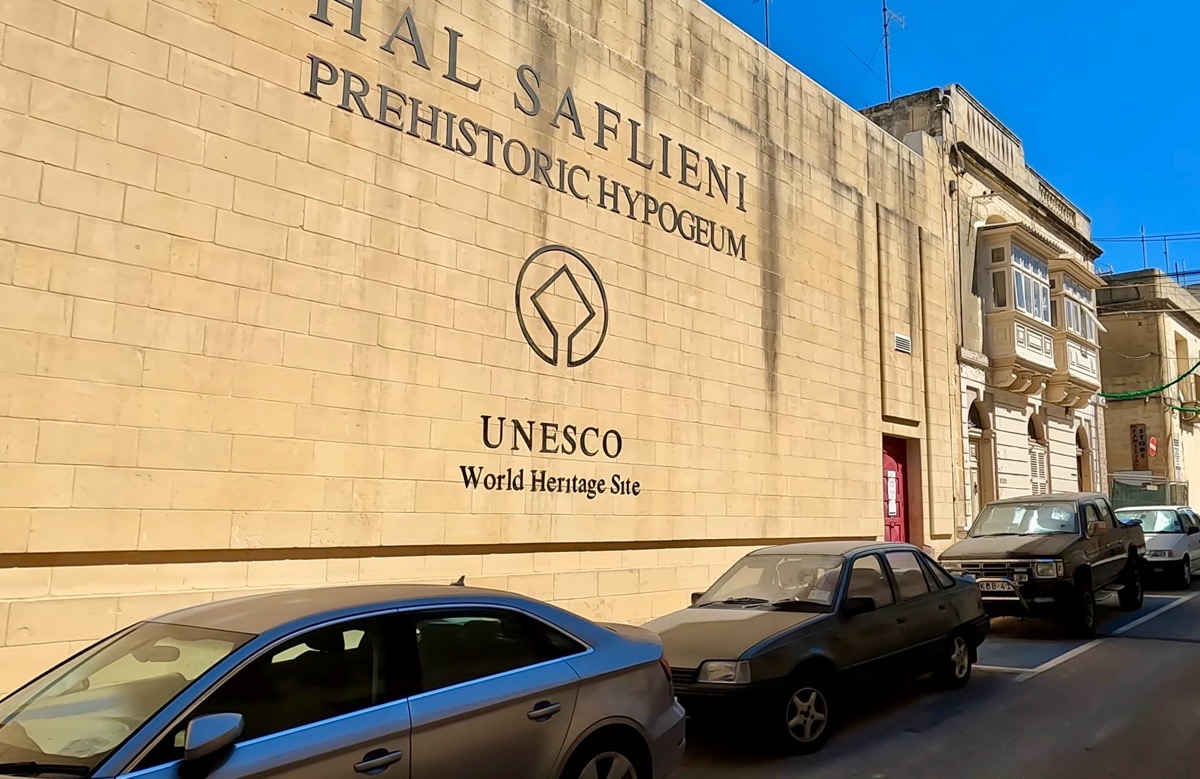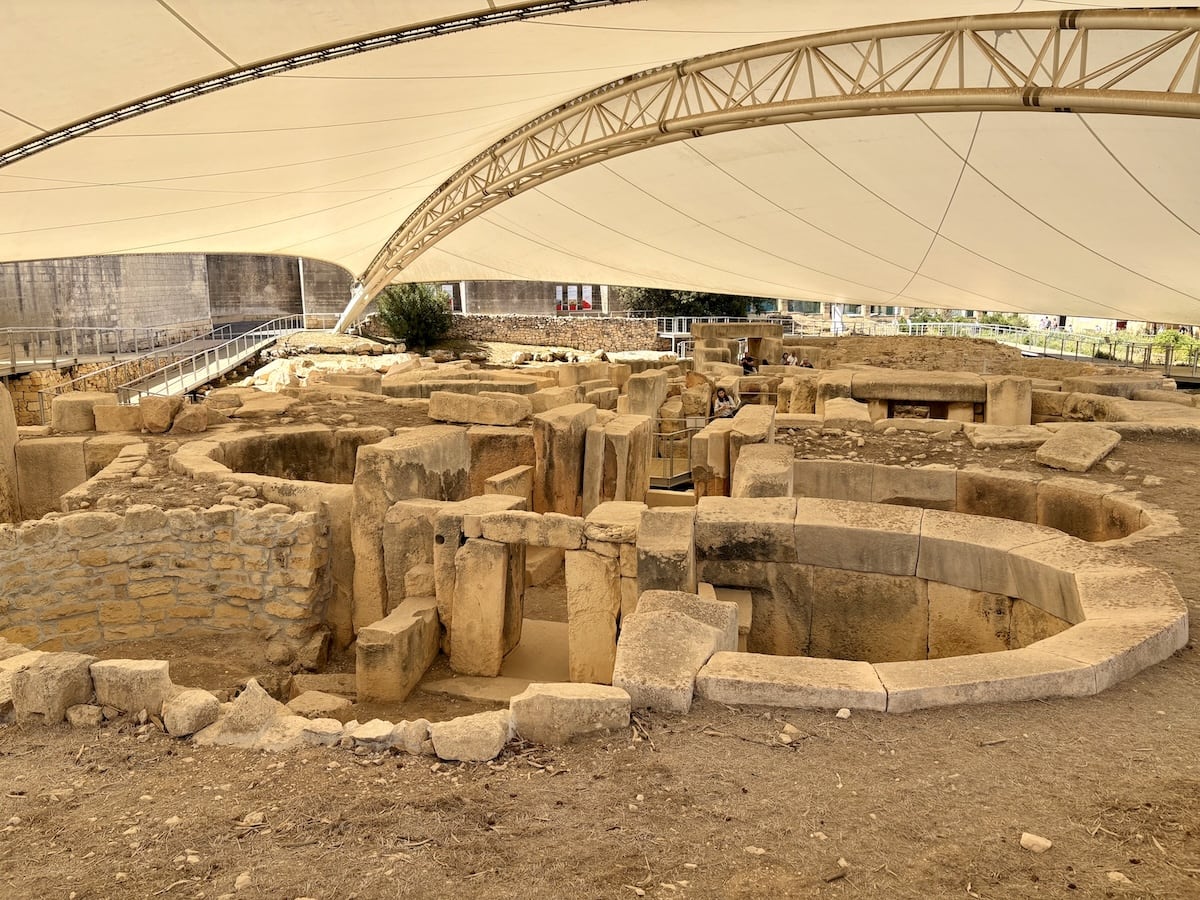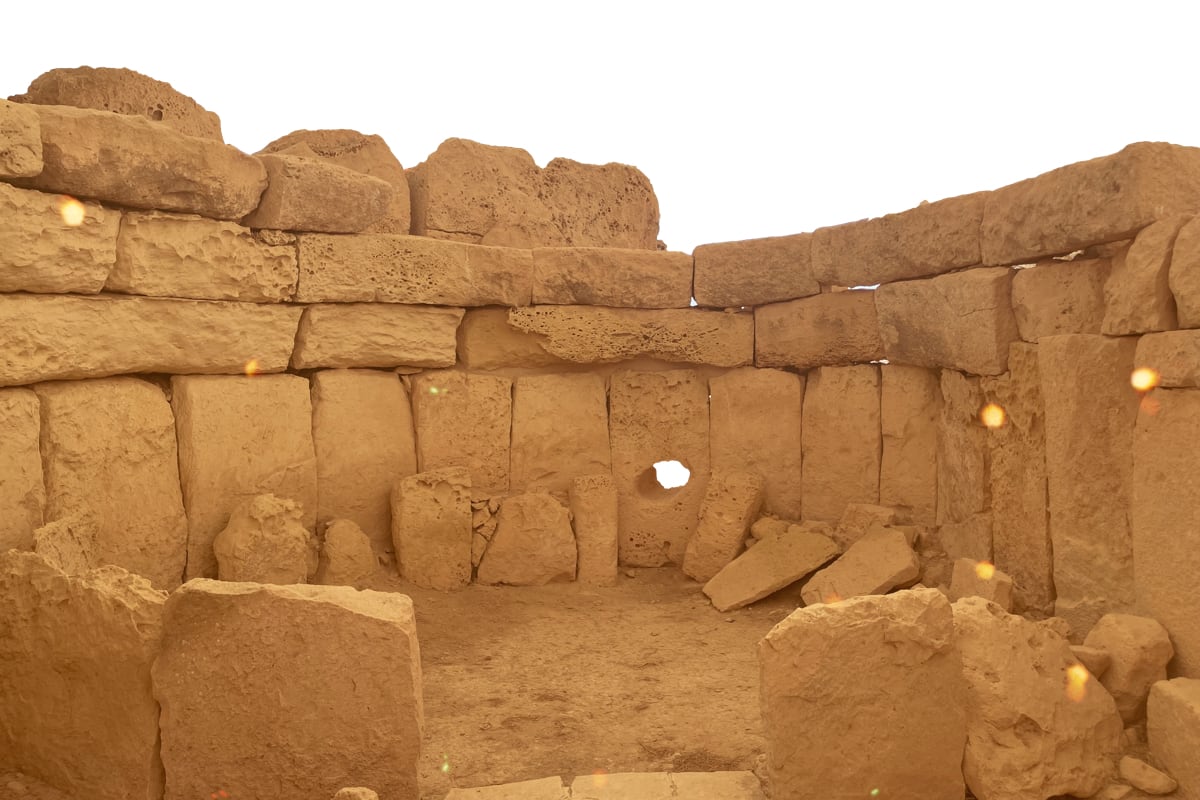The Hal Saflieni Hypogeum, located in Paola, stands as one of Malta’s most extraordinary archaeological treasures.
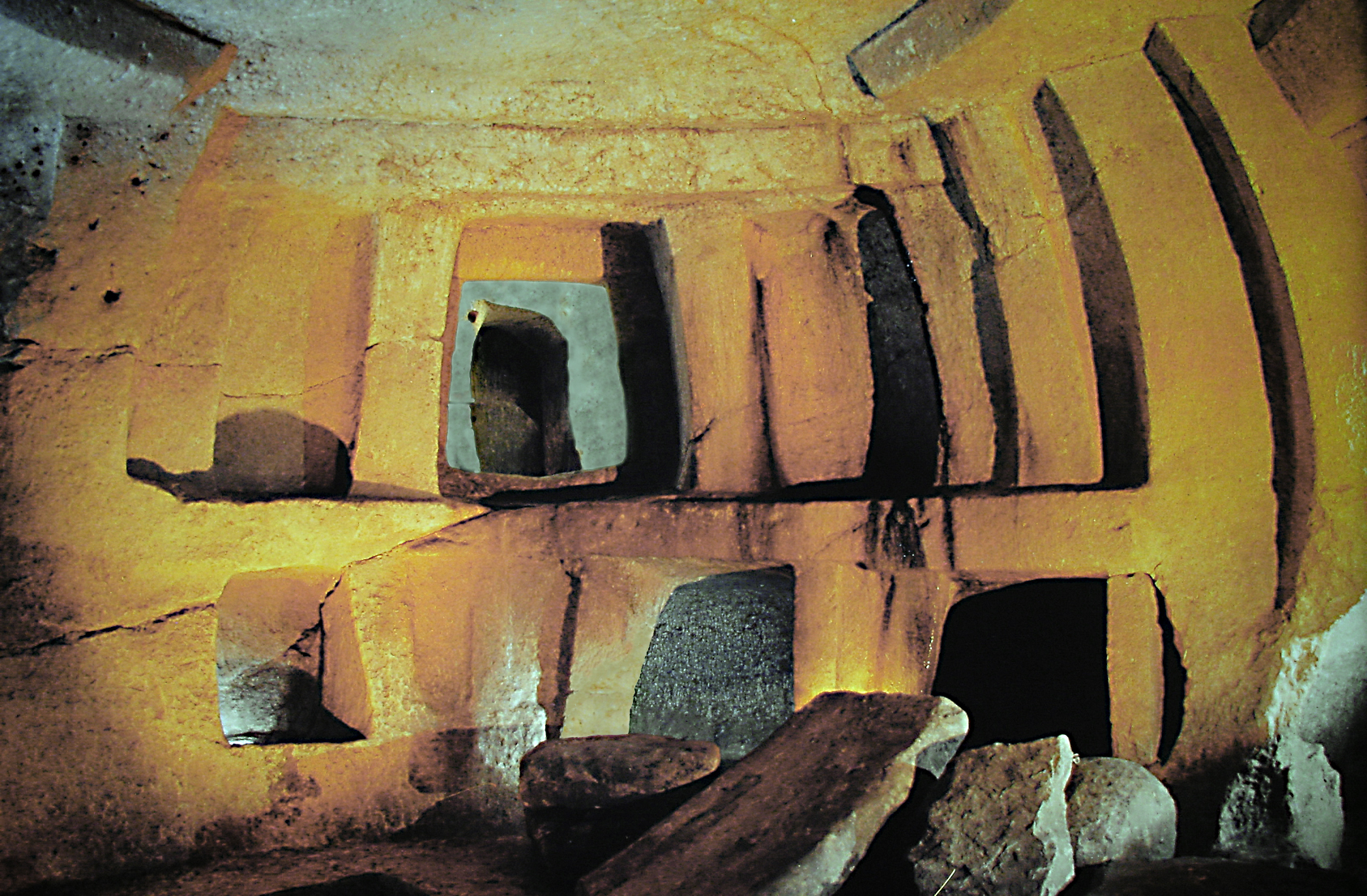
Carved into the island’s limestone over 5,000 years ago, this underground complex of halls, chambers, and passageways has baffled historians and enthralled visitors for generations. Designated as a UNESCO World Heritage Site, the Hypogeum is considered a masterpiece of prehistoric engineering and spiritual practice, reflecting the creativity and skill of Malta’s Neolithic inhabitants.
Discovered by accident
The site was discovered quite by accident in 1902, when workers cutting cisterns for a new housing development broke through the roof of a hidden chamber. The ensuing excavations revealed not just a simple tomb but a vast, multi-level structure that likely served as both a burial ground and a place for complex rituals.
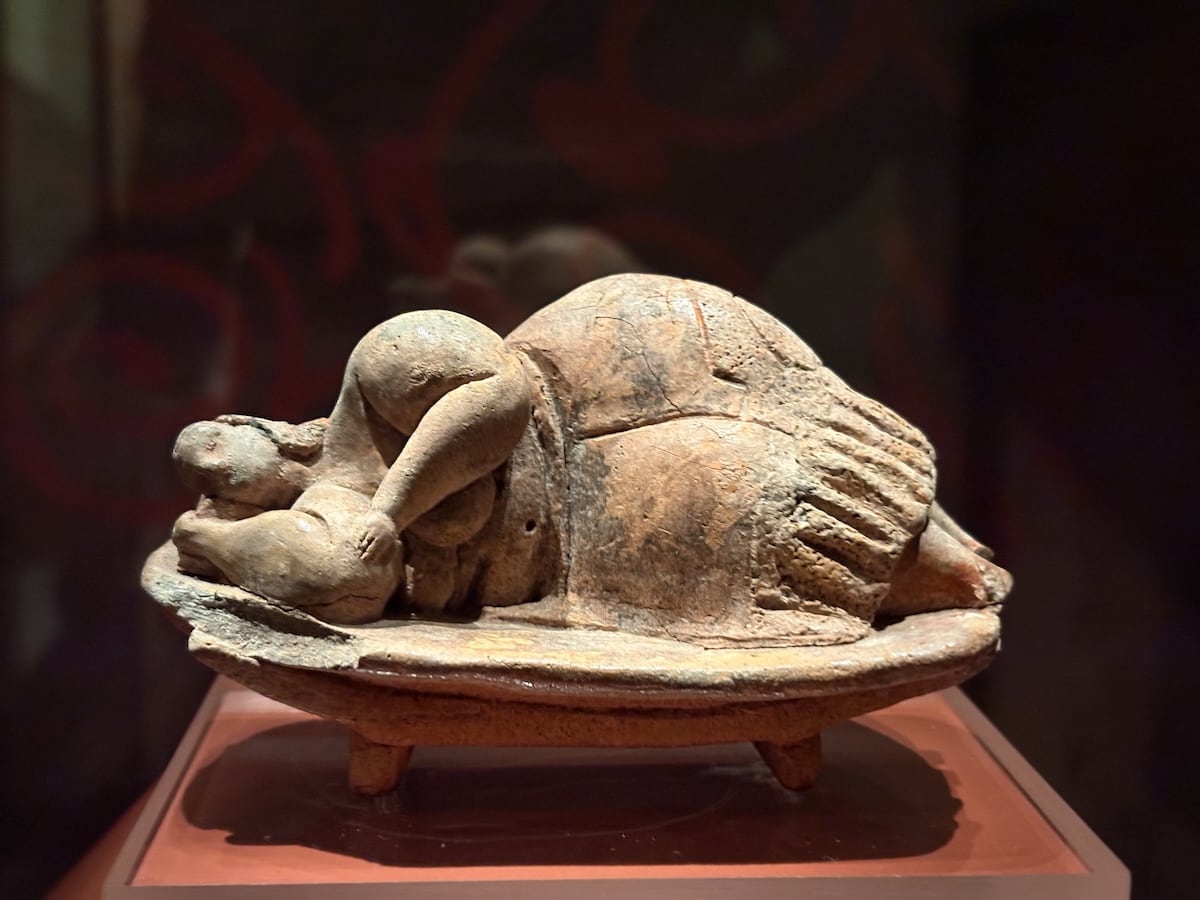
Archaeologists uncovered thousands of human remains along with artifacts such as pottery shards, stone tools, and the iconic “Sleeping Lady” figurine, which hinted at possible fertility or goddess worship. These findings offered a glimpse into the belief systems of the people who thrived in Malta long before the rise of classical civilizations.
Otherworldly
Entering the Hypogeum feels like stepping into an otherworldly labyrinth. Narrow corridors lead into larger rooms hewn from solid rock, and the spaces are often artfully shaped to mimic the architecture of above-ground temples. A feature that continues to fascinate both newcomers and regulars is the remarkable acoustic property of the so-called Oracle Chamber. Even a quiet whisper in this chamber can resonate powerfully throughout the subterranean corridors, suggesting that sound played an important role in the ancient rites once performed here.
Modern researchers have conducted studies to understand the acoustic design, adding to the growing body of knowledge that makes each visit an opportunity to learn something new.
Exclusive experience
 Because the Hypogeum is incredibly delicate, only a limited number of visitors are allowed in each day. This measure helps preserve the unique microclimate that has protected the painted red ochre patterns on the walls and the intricately carved surfaces. If you’re planning to visit for the first time, be sure to book your tickets well in advance. The intimate tour groups and the soft lighting make for a deeply immersive experience, but they also mean that spontaneous visits are rarely possible.
Because the Hypogeum is incredibly delicate, only a limited number of visitors are allowed in each day. This measure helps preserve the unique microclimate that has protected the painted red ochre patterns on the walls and the intricately carved surfaces. If you’re planning to visit for the first time, be sure to book your tickets well in advance. The intimate tour groups and the soft lighting make for a deeply immersive experience, but they also mean that spontaneous visits are rarely possible.
Regular visitors, on the other hand, often appreciate how the site’s restricted access keeps it from becoming overcrowded, allowing for moments of stillness and reflection that can be hard to find in more heavily toured locations.
A lot of secrets, not yet discovered by science
Scientists continue to study the Hypogeum, hoping to unravel the secrets of how and why it was built. One theory suggests it may have started as a natural cave system that the Neolithic community gradually expanded and adapted for ceremonial purposes.
Others propose that the remarkable resonance of the Oracle Chamber was carefully planned, offering a tangible link to the spiritual practices that likely involved chanting or intoning to connect with the divine. These hypotheses give each visit a layer of excitement, as ongoing research can alter our understanding of the site’s function and significance.
In the Lost Guardian of Malta: we discover that Malta’s well-known necropolis is more than just ‘a’ necropolis. Can the stories that are being told… be true?
Linked to Tarxien temples?
Beyond the chambers themselves, the Hypogeum’s surroundings also hold clues to the broader context of prehistoric Malta. Nearby, you can find other significant sites like the Tarxien Temples, adding to the sense that this corner of the island was a focal point for Neolithic life and spirituality. Many visitors enjoy pairing a tour of the Hypogeum with a trip to Malta’s National Museum of Archaeology in Valletta, where they can see artifacts in a curated setting and gain further insight into the island’s temple-building culture.
Researching Malta’s past
 Despite being more than five millennia old, the Hypogeum does not feel like a relic resigned to the past. It remains a living research site, where new discoveries and conservation technologies continually reshape our understanding of Malta’s earliest chapters.
Despite being more than five millennia old, the Hypogeum does not feel like a relic resigned to the past. It remains a living research site, where new discoveries and conservation technologies continually reshape our understanding of Malta’s earliest chapters.
There’s a palpable sense of continuity when you pass from the sunlit streets of modern Paola into this subterranean realm. Every echo and every worn stair tells a story about the island’s enduring relationship with the people who came before.
Visiting this testament to a long-lost civilization
Whether you’re a first-time explorer marveling at the ancient rock-cut rooms or a seasoned visitor returning for another glimpse of its hidden complexities, the Hal Saflieni Hypogeum offers an experience unlike any other. It stands as a testament to a long-lost civilization’s ingenuity and reverence for the mysteries of life and death, silently guarding secrets that scholars and travelers alike find irresistible. The Hypogeum is more than just a historic site; it’s a rare portal into a world that continues to captivate us from a distance of five thousand years.
All information about visiting, opening hours and ticket prices can be found on the dedicated website of Heritage Malta.
Interior image: thanks to Hamelin de Guettelet – Own work, CC BY-SA 3.0, Wikipedia
